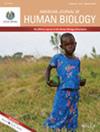Evaluating the Concept of Brain Sparing in a High Income Setting, Using Historical Records of Maternal Influenza or Syphilis Infection
Abstract
Introduction
In the context of adverse in utero environments, the fetal brain might be preserved at the expense of other tissues. This trade-off, brain sparing, has not been studied in the context of maternal infection. We investigated cases of maternal syphilis in the early 20th century and influenza during the 1918–1920 pandemic, in the Swiss city of Lausanne, a relatively high-income setting. We tested the brain sparing hypothesis, that head circumference is protected at the expense of birth weight.
Methods
A total of 8530 individual birth records from 1911 to 1922 from the University Maternity Hospital of Lausanne were used. We fitted generalized linear and additive linear models to explain how neonatal size varies under disease exposure.
Results
Influenza reduced head circumference and birth weight among livebirths similarly, by −0.11 and −0.14 standard deviation (SD) units respectively. Conversely, for syphilis-exposed infants, head circumference was affected more than birth weight (−0.61 SD vs. −0.46 SD). Stillborn infants exposed to syphilis experienced a much greater reduction in head circumference (−1.92 SD) than liveborn infants. After adjustment for gestational age, these findings persisted in the case of influenza, but the effects of syphilis were reduced. Furthermore, half of syphilis-exposed infants were born before term, suggesting that lower infant size was partly mediated by shorter gestation. Nevertheless, head circumference among stillbirths exposed to syphilis was still substantially reduced, even after adjustment for gestational age (−1.26 SD).
Conclusion
Our findings do not support the brain sparing hypothesis. Moreover, the substantial reduction in head circumference among syphilis-exposed fetuses might help explain why a quarter of them were stillborn.


 求助内容:
求助内容: 应助结果提醒方式:
应助结果提醒方式:


